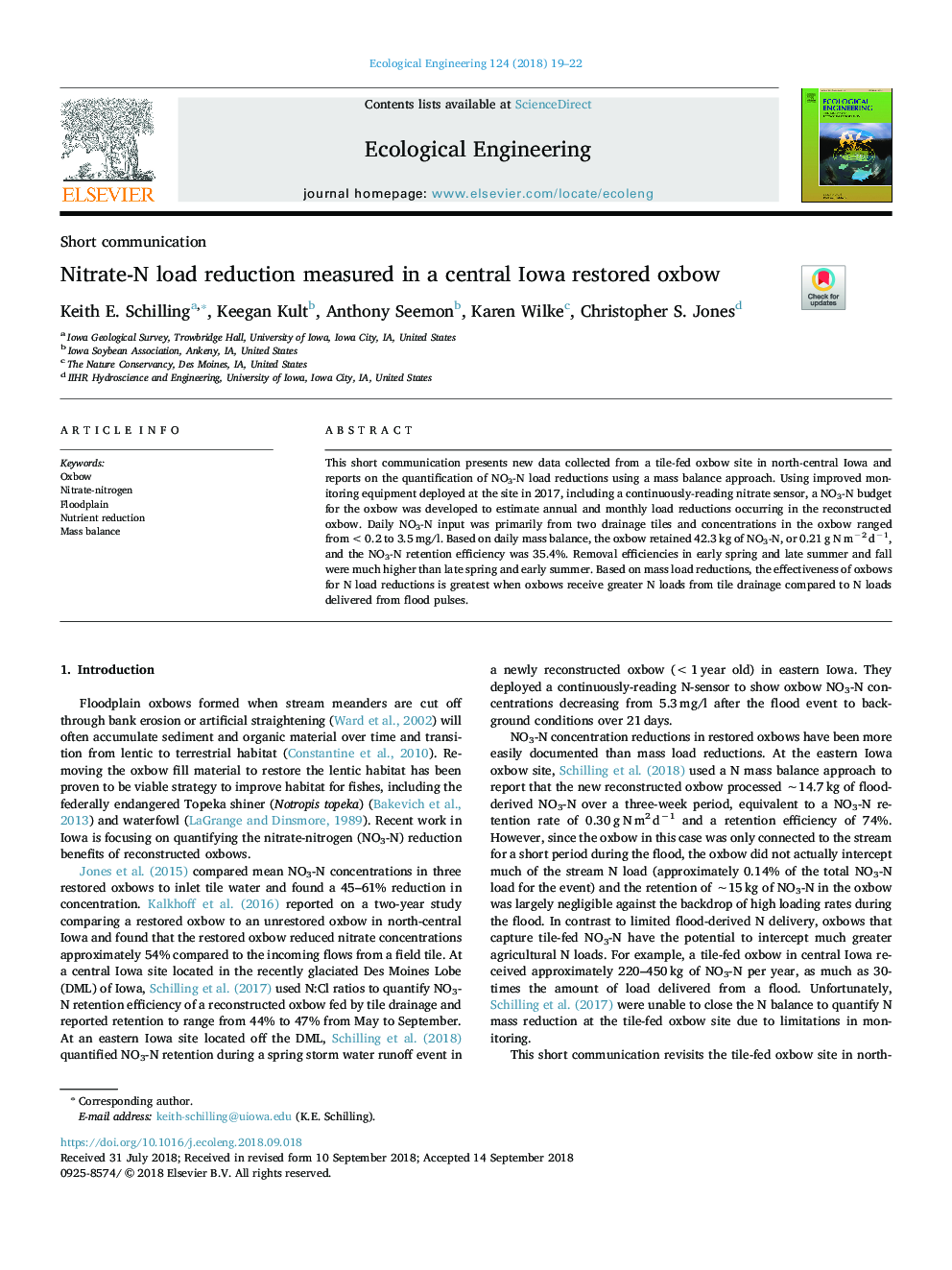| Article ID | Journal | Published Year | Pages | File Type |
|---|---|---|---|---|
| 10223343 | Ecological Engineering | 2018 | 4 Pages |
Abstract
This short communication presents new data collected from a tile-fed oxbow site in north-central Iowa and reports on the quantification of NO3-N load reductions using a mass balance approach. Using improved monitoring equipment deployed at the site in 2017, including a continuously-reading nitrate sensor, a NO3-N budget for the oxbow was developed to estimate annual and monthly load reductions occurring in the reconstructed oxbow. Daily NO3-N input was primarily from two drainage tiles and concentrations in the oxbow ranged from <0.2 to 3.5â¯mg/l. Based on daily mass balance, the oxbow retained 42.3â¯kg of NO3-N, or 0.21â¯gâ¯Nâ¯mâ2â¯dâ1, and the NO3-N retention efficiency was 35.4%. Removal efficiencies in early spring and late summer and fall were much higher than late spring and early summer. Based on mass load reductions, the effectiveness of oxbows for N load reductions is greatest when oxbows receive greater N loads from tile drainage compared to N loads delivered from flood pulses.
Related Topics
Life Sciences
Agricultural and Biological Sciences
Ecology, Evolution, Behavior and Systematics
Authors
Keith E. Schilling, Keegan Kult, Anthony Seemon, Karen Wilke, Christopher S. Jones,
